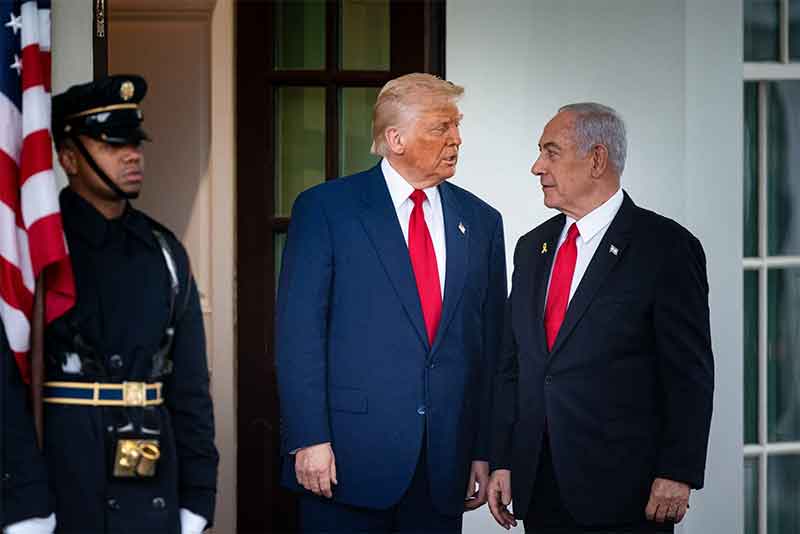
The biggest democratic movement in modern Iraq is waning, but the movement is going on. Activists of the Tahrir Square in Baghdad are struggling to keep alive the movement.
Security forces have killed nearly 700 protesters and wounded about 30,000 since the protests began in October.
Media reports including a report by the news agency AP said:
“At the once bustling hub of the largest anti-government protest movement in Iraq’s modern history, crowds have dwindled, and donation boxes have sprouted up. Loudspeakers resound with calls by activists for funds to keep their hard-fought revolution alive.
“The six-month-old movement has faced one setback after another, from the shifting positions of a mercurial Shiite cleric to an apathetic political class and, now, fears over an outbreak of the coronavirus that Iraq’s decrepit health system has struggled to contain, with nearly 93 confirmed cases and nine deaths.”
Weeks ago, thousands of youth everyday joined the Tahrir Square sit-in protest. Now, only a few hundred protesters turn up. Morale has been dampened among youth who took to the streets on October 1 to protest corruption, poor services and unemployment.
The reports said:
“Protesters have found it difficult to revive the strength of their leaderless movement after scoring victories early on, like pressuring lawmakers to pass a key electoral reform bill and forcing former Prime Minister Adel Abdul-Mahdi to step down. Assassinations, abductions and threats targeting prominent protesters have contributed to blunting the momentum.
“A looming economic crisis linked to the coronavirus pandemic and ongoing political dysfunction could eventually bring a new jolt that inspires Iraqis back to the streets. But for the moment, the movement is looking at what went wrong.
“The difficulties of recent months caused the poles of authority among protesters to shift from the capital to the south, while some say shunning any form of central leadership was a mistake.”
An AP report cited Marwan Ali, 23, who had attended university to study communication but could only find work as a barber after graduation, and Mohammed Abbas, 19, who did not bother pursuing a higher education, convinced it would not secure a job. In October, Abbas joined the movement.
The report also cited Hussein al-Hind, 22, who was a teenager when he heeded a call by Iraq’s top Shiite cleric to take up arms and defeat the Islamic State group with what would later become the paramilitary Popular Mobilization Forces. He soon became disenchanted as his one-time war heroes joined the ranks of the political class by running in the May 2018 election.
The young men have also suffered the violence that has met the movement. Al-Hind showed two bullet wounds from clashes with riot police; Abbas was detained by police for three days early on in the demonstrations; Ali’s family has received messages from unknown groups threatening his life.
Now, the future of their hard-fought protest movement depends on the ability of these youth to keep to the streets.
The AP report said:
“When the conversation turned to the state of their movement, Marwan Ali took a moment’s pause.
“‘We are disappointed,’ he said. Asked why he was still coming to Tahrir, he said, ‘This isn’t about the homeland anymore, we are here for the blood of our martyrs.’”
Since beginning of the movement, more than 500 people have been killed under fire by security forces using live ammunition, tear gas and recently pellet guns.
The reports said:
In nearby Khilani Square, clashes still rage between a core group of protesters and security, with at least two demonstrators dead last week.
The movement was dealt a blow in January after radical Shiite cleric Muqtada al-Sadr, who also heads a major political bloc, withdrew support after elites selected a prime minister candidate he backed, Mohammed Allawi.
Al-Sadr’s reversal instilled a climate of fear in the square as militiamen affiliated with his group, which once protected protest sites, intimidated demonstrators who refused to back Allawi, activists said. Allawi has since withdrawn from the post.
The AP report cited Kamal Jaban, an activist: “We were tools in al-Sadr’s game.”
The activists said they wanted to avoid when al-Sadr’s followers first joined the movement.
As early as November, protesters bristled at the question of leadership and were quick to diminish the credibility of those making claims of authority over them. They tore down stages built by political parties in protest plazas, fearing the fate of previous grassroots movements that fizzled out when co-opted by political actors. Now, the protesters said in hindsight the lack of core leadership had hobbled their movement, enabling figures like al-Sadr to do exactly what they had feared.
The AP report cited Ali: “There is no one to represent us, put pressure on the government. Tahrir Square became tainted with al-Sadr supporters. At first Nasiriya was listening to us, now we listen to them.”
Nasiriya is a southern city, where the movement is still strong.
Other protesters said fatigue from months on the street was taking a toll as donations for food and supplies were running short and temperatures dropped over the winter.
“Weak turnout was expected some time ago because the protesters who have been here for five months are tired, sleeping in cold and far from work, their families and school,” said Murtada Emad, a protester and university student at Babil College of Basic Education. “I left school, but my family is pressuring me to go back.”
By February, protesters were marginalized as political bickering over Allawi’s government formation ignored the core demands of the street. Allawi withdrew as prime minister-designate on March 1 after failing to secure parliamentary support for his Cabinet.
Haboubi Square
Al-Sadr’s move also diminished Tahrir Square’s status as the central voice of the movement. Activists started looking to Haboubi Square in the southern city of Nasiriya for orders. Nasiriya’s protesters have been resilient against infiltration by political parties, partly due to support from local tribes.
It was Nasiriya that gave political elites a deadline to make progress on protester demands, prompting an escalation in demonstrations across the country.
Later, calls from the southern city led protesters in Baghdad to block the strategic Mohammed al-Qassim highway. When Haboubi Square raised the image of activist Alaa Rikabi as their choice for prime minister, Tahrir did the same.
Revolution will repeat
Back in Tahrir, Ali Jumaili, 22, said all hope was not lost.
“Every day, I sit on the sidewalk with my friends and weep because of the weakening demonstrations,” he said. “The revolution will repeat itself with more vigor in the future.”
Another report said:
On March 6, protesters in Saadoun Tunnel under Tahrir Square were chanting slogans against “the thieves who stole our wealth, who stole our dreams, we only loved our homeland but they killed us.”
Despite the rapid spread of the coronavirus in Iraq, protesters have maintained a steady presence.
Basra
On March 5, hundreds of university students in Basra took part in a rally, chanting, “Politicians are the real virus,” “Corruption is the real virus” and “You are the corona,” in reference to the politicians the protesters accuse of being loyal to Iran instead of Iraq.
Basra has been the site of several rallies, demanding the border with Iran be closed after many cases of the virus were traced to people coming from Iran.
Despite all the precautions, the protesters who have been gathering in the squares and streets during the last five months in most of Iraq’s central and southern cities are not staying home.
Not only are the protesters holding firm, but more people are joining their ranks.
On March 1, as Mohammed Tawfiq Allawi missed the deadline to form his Cabinet, thousands of protesters from Dhi Qar, Wasit, Karbala, Najaf, Babil and other parts of southern Iraq joined the protesters in Baghdad and moved toward the Green Zone, where the parliament and most of the government buildings are located. Some of them were from Sunni areas such as Salahuddin, northern Baghdad, and Anbar province.
Iraq’s health care system once had the highest medical standards among the Middle Eastern countries, has declined significantly due to decades of wars, sanctions, corruption and political crises.
The protesters accuse the government of hiding the actual numbers of those infected and the virus’ transmission from elsewhere to Iraq.
The protesters’ strong feelings against Iran’s influence in Iraq have contributed to the formation of conspiracy theories. Some believe that the virus was intentionally transmitted from Iran to Iraq to end the protests.
“The government uses coronavirus as an excuse to end the protests. They tried everything — snipers, live bullets, tear gas, abduction and so on and on — but they failed,” said Yasamin Mustafa, a teenage protester from Basra. “They are now finding another way to stop us, but they will fail again.”
Women protest
Weeks ago, hundreds of Iraqi women took to the streets of central Baghdad and southern Iraq in defiance of a radical cleric’s calls for gender segregation at anti-government protest sites.
The protests have been unique because they have drawn both men and women who have camped out alongside each other in protest squares, a rare occurrence in Iraq, a conservative majority Muslim country.
The women protesters waved Iraqi flags and banners in English and Arabic, chanting slogans condemning security crackdown against demonstrators.
Influential Shiite cleric Muqtada al-Sadr, leader of Parliament’s Saeroon bloc, recently issued an 18-point code of conduct for protesters in which he cautioned against the mixing of men and women at sit-in areas.
In response, women flooded the streets of Baghdad and Nasiriya.
“Whoever accuses women of being weak doesn’t understand Iraq,” said protester Baan Jaafar, 35. “We will continue to defend our rights through demonstrations and participate in the decision to build a new Iraq after the demonstrations.”
Al-Sadr, whose political bloc won the most seats in Parliament in Iraq’s May 2018 election, initially threw his weight behind the anti-government uprising but recently re-positioned himself toward the political establishment after political elites selected former government minister Mohammed Allawi as prime minister-designate, a candidate he endorsed.
Since then, he has issued a dizzying array of calls to followers, asking them to return to the streets days after withdrawing support from protests. The contradictory orders have exacerbated tensions already present between anti-government demonstrators and his followers.
“We came out today against those who accuse Iraqi female demonstrators in Tahrir Square,” said Nada Hassan, 24. “We tell them that even if you kill or threaten us, we will continue to support the demonstrators.”
Before the march, al-Sadr warned that Iraq must not “turn into Chicago,” equating the U.S. city with “immorality.”
The statement was immediately mocked on social media with Iraqis posting memes and tweets comparing Iraq to the U.S. cosmopolitan city.
SIGN UP FOR COUNTERCURRENTS DAILY NEWS LETTER










































